Rising Damp Treatment
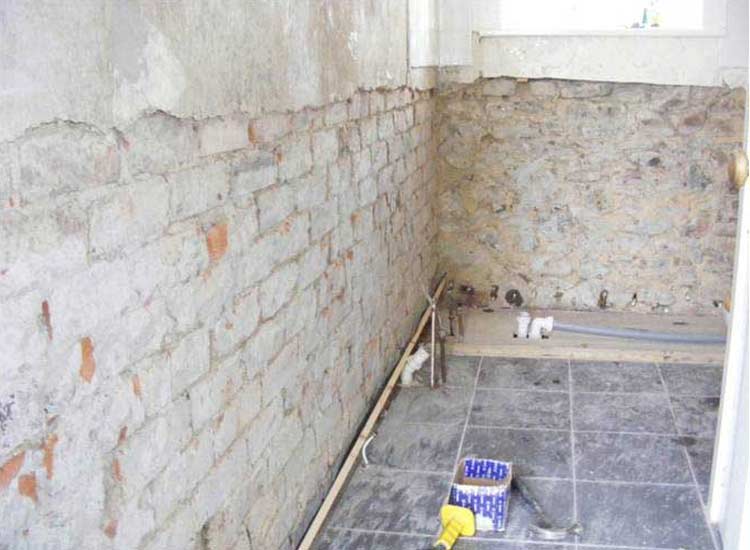
Rising damp treatment is one of the most effective ways to deal with your damp issues. If you are concerned that you may be suffering from a rising damp issue, then this page will provide all the answers to you rising damp treatment questions. You will gain a much deeper understanding of what rising damp is and what is the most effective way to damp proof your property.
Bricks and mortar are naturally porous which provides water with the perfect platform to manoeuvre itself upwards through the narrow air pockets. Liquid possesses the dangerous capability to defy gravity and travel upwards from the ground through the pore structure of the wall and this is called capillarity. As a result, bricks and mortar absorb this moisture and this can result in long term damp affecting the wall. Your wall is essentially soaking the groundwater upwards which results in the damp rising and affecting the wall fabric.
How to Treat Rising Damp?
Rising damp can be treated in a variety of ways. The method most often used is having a damp-proof course installed. This course is put in place to stop water from gaining access to the mortar and bricks within the property walls. Plastic membranes or slate are some of the materials used for damp proof courses as they break the capillarity drawing the damp up and keep the rising damp below the damp proof course level. This system will be installed with the objective of forming a constant layer of waterproof material that acts as a barrier preventing dampness from rising from the ground through the wall.
Before doing anything to your property, our surveyors will conduct an extensive damp survey of the property. After our specialists have identified the damp problem a bespoke specification will be detailed to carry out the required remedial work to your property in order to treat your rising damp problem.
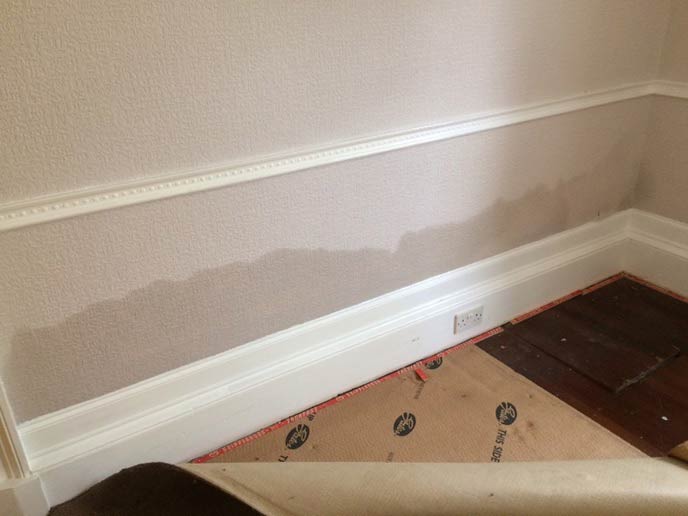
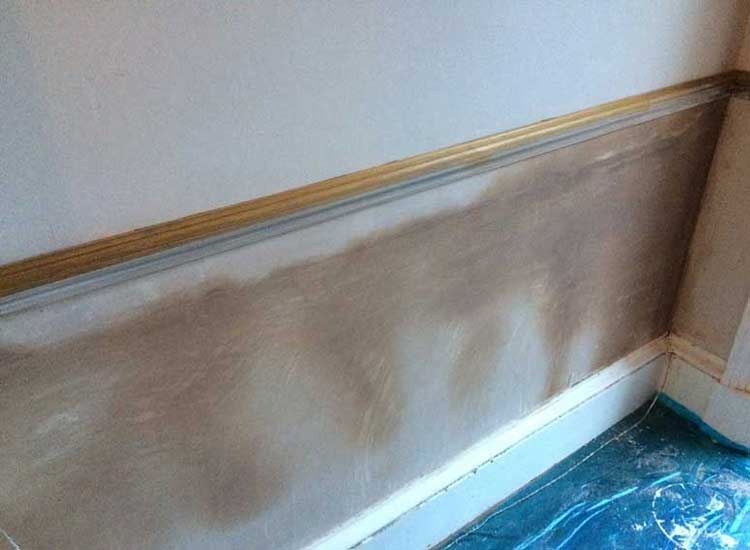
Rising Damp Treatment: Damp Proof Course Injection
One of the most common methods of damp roofing any property is a damp proof course injection. Our specialists will drill your property walls internally or externally in order to feed or inject the damp proofing material into the holes. Upon completion, these holes will be hidden behind a skirting level. Our damp remedial works create a seamless damp proof course that will protect your property. Damp affected plasterwork will be stripped in order to remove the salt contaminated area before replacing it with a renovating plaster. If you feel a bit intimidated by this, don’t be. Our specialists will determine the system which needs to be installed relevant to your specific situation.
How Easily Can Rising Damp be Treated?
All new built homes will have a damp-proof course installed, but the quality of the damp proof course in older property may have deteriorated. This may allow damp to rise above the damp proof course and affect the wall fabric. The easiest way to solve the rising damp issue is to repair the existing damp proof course. An incorrectly fitted, bridged or damaged damp proof course presents water with an opportunity to rise above the damp proof course level and therefore cause damp problems in your property. Having a correctly functioning damp proof course is the most basic precaution which any property owner must take in order to prevent rising damp. This rising damp treatment is timely and effective. How to get rid of damp is one of the most common queries which we receive from homeowners. Therefore, inspecting the quality of your damp proof course is an excellent step towards eradicating your rising damp problem.
Inserting or Repairing a Damp-Proof Course
Effective damp proof courses (DPCs) prevent rising damp from impacting property walls. Unfortunately, these physical barriers can become defective and allow rising damp to affect walls that were previously dry. Particularly within older houses and buildings, the damp proof course may become damaged over time. Improper installation or bridging of the DPC are other common reasons why the damp-proof course can lose its ability to prevent rising damp from affecting the walls of your property.
Furthermore, when renovation work is being done to a property to modernise it or extend it this can have an impact on the existing DPC’s. For example, if the external ground level is raised to suit the property owner’s specific desires this can result in the DPC being bridged and rising damp beginning to appear where none used to exist previously. In the event of this occurring, the ground requires to be lowered to 150mm below the DPC or a remedial DPC needs to be introduced in order to stop rising damp from happening.
When doing the remedial work, all skirting boards on the affected walls must be removed prior to rising damp treatment to the walls. In addition to this, all salt contaminated plaster must be hacked off to at least 300mm higher than the last spotted signs of damp or salt contamination. Brickwork becoming visible means that the rising damp treatment can begin.
Specialists will then drill holes internally into the lowest mortar course which is accessible. These tend to be drilled at an interval of 120mm. Once the holes have been prepared suitably, injection of the rising damp treatment can then be performed. Injection of a damp-proof cream or insertion of damp-proofing rods helps to ensure a highly effective, targeted damp wall treatment of the rising damp.

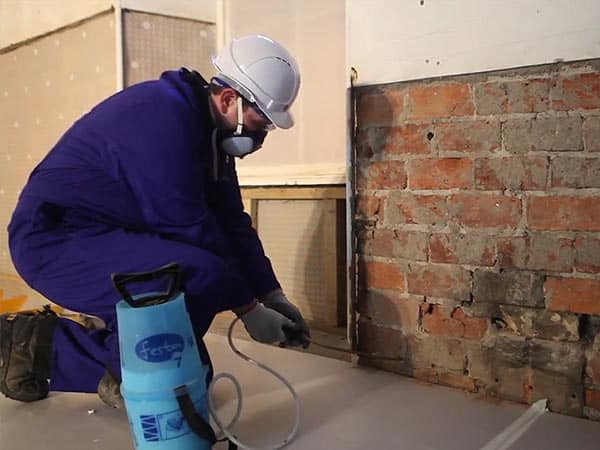
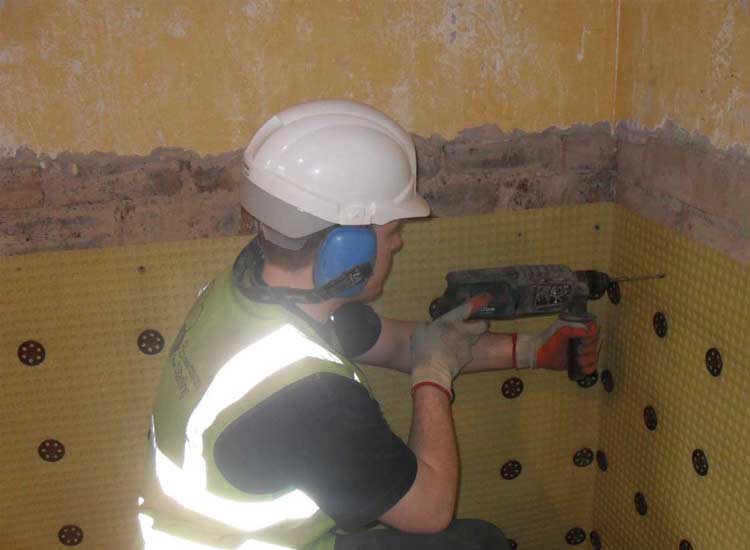
Wall Damp Proofing Using A Membrane
This is a complimentary rising damp treatment method which is often used alongside the chemical damp proof course. It is very similar to the normal re-plastering system in the sense that initially walls are stripped before being drilled internally before a damp-proof course is injected however the membrane is applied to the wall instead of re-plastering directly onto the wall. The wall is covered with the waterproofing membrane which improves the drying time of the plaster finish as the existing damp wall is separated from the plaster by the membrane. The membrane is then covered with renovating plaster or plasterboard before being redecorated. The waterproof membrane is used in order to ensure that the system is as effective as it possibly can be. Combined with the chemical damp proof course a strong system is created which can then be guaranteed for 30 years which gives our clients peace of mind that their damp problem is solved.
Exterior Ground Level Management
Sometimes, property owners can have a perfectly functioning damp proof course but the ground outside may have been built up above the damp proof course level. If this occurs, the problem can be solved by removing the excess soil from the exterior side of the damp wall so that the damp proof course is a minimum of 150mm above ground level. This will ensure that the damp proof course is not bridged by the high ground level and prevents heavy rain bouncing over the DPC which could cause internal damp issues. Our professionals can easily make this simple adjustment for you.
Conclusion. What to Do Next?
A damp survey from Richardson & Starling’s damp experts can prove crucial with regards to ensuring that your property is not at risk of suffering from damp. If your property is affected by damp then this can cause major issues and serious deterioration to the fabric of your property and even cause unprotected timber to be attacked by dry or wet rot fungus. If you think you may have a damp issue in your property, then contacting Richardson & Starling to visit your property will give you a professional assessment that you can trust. Should your property require rising damp treatment then this will be guaranteed with a GPI supported guarantee for up to thirty-year for your peace of mind. Many property owners contact Richardson & Starling for a straightforward and common-sense approach to the diagnosis and treatment of their property damp problems and this is exactly what Richardson & Starling’s specialists provide.Not sure what is causing damp in your home? Contact your local branch for advice or a property survey to regain your peace of mind.
